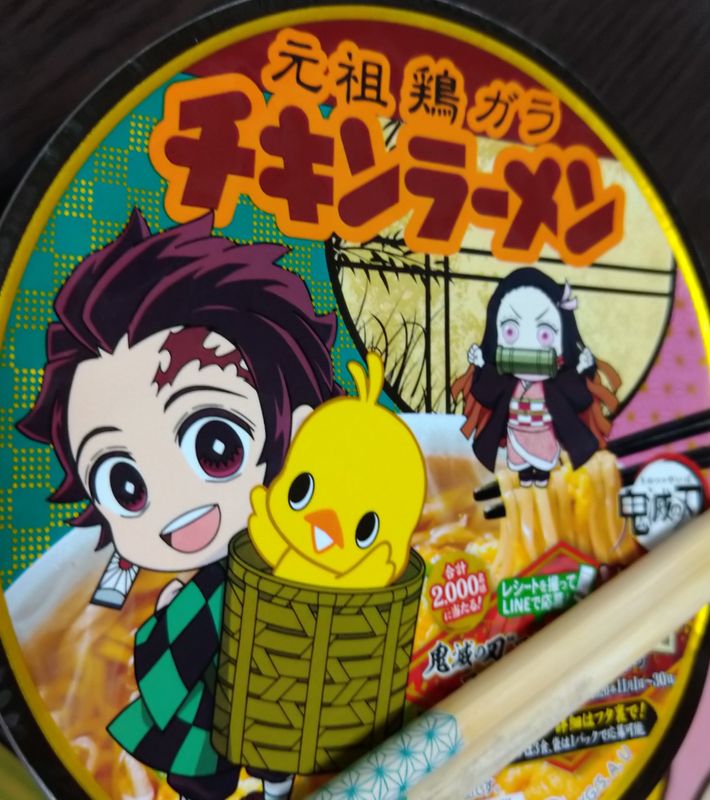Oct 8, 2021
Bloody Show, Silenced Women: A Western Woman's Analysis of Kimetsu no Yaiba
With a new season of Kimetsu no Yaiba coming out this winter, one Japanese TV station recently ran the whole first series again, from start to finish including the movie. There is no doubting that this anime is extremely popular, as the Mugen Train movie became the highest grossing Japanese movie of all time.
My initial draw to the series was related to the traditional patterns on fabrics and accessories inspired by the show which takes place in the Taisho era of the early 1900s. Anything even vaguely historical tends to interest me and anything that could make my kid also care about history is even better, but there are some major detractors in this show especially when you're showing it to young children.
It's not just the gore, but there is a lot of blood and guts. This is one of the few anime primarily marketed to children to actively horrify both my child and me with the visceral imagery. There are elements that are extremely graphically violent in a way that most programs meant for people under the age of 12 do not usually engage in. Parents of children who are sensitive to bodily harm or violence should be cautious when viewing if they haven't already learned this the hard way.
As my kid had already watched all of Jojo's Bizarre Adventures with her father by the time Kimetso No Yaiba came out, her excitement over the popular anime overwhelmed my desire to avoid violent shows. Since she didn't have any problems with the former, I made the assumption that this would be about the same. Overall, this wasn't exactly wrong, though she did have some scenes she turned away from while re-watching with her dad.
As bloody as it is, that's not the only thing that bothers me. In a country that has never heard of the Bechdel test, inventing a show with a strong female fighter as a main character but then also gagging her for the majority of the show is probably unsurprising. Japan still has a lot of blatant sexism ingrained in the society in ways that aren't always easy to recognize or address especially from within.
One reason I had initially been excited about the show was the opportunity to show my daughter a strong female pop culture character from her home country. If you have similar desires, stick with Ghibli films, where female characters are strong, vocal, and capable on their own accord.

Tanjiro and Nezuko on kid's instant ramen
When we first meet the main characters, everyone is happy and human, but this will not last. When oldest brother Tanjiro returns from selling charcoal, he finds his whole family murdered by a demon and only his closest sister surviving with a faint pulse. As he carries her body through the woods to the next town, she awakens and attacks him. It turns out that she had been turned into a demon but her love for her brother keeps her from killing him. A nearby woodsman finds them, rescues the boy and chooses not to kill the girl. With the careful guidance and mind control techniques of the skilled recluse, they manage to convince Nezuko that every human is a member of her beloved (deceased) family and every demon must be killed. Having control over her physical size, she shrinks to fit inside of a box that her brother carries during the day so as to avoid the demon-deadly sunlight. She is fitted with a bamboo muzzle which she never removes for fear that her hunger for human flesh would overpower the mind control and endanger everyone around her.
Nezuko is the only main female character for most of the story and she never gets to speak outside of whimpers and hums after the first episode. I worry about the message this sends to children as it seems really clearly unfair to me. Girls, especially those with traumatic pasts, must be muzzled for fear of inconveniencing the people who must take care of them, as they can clearly not take care of themselves. Their rage is only valuable if they are under someone else's control. They are only powerful as someone else's weapon.
There is a positive in this story as the brother embraces his emotions and cries more than the average male protagonist in a kids anime. He gets scared and learns how to fight better so he can do something other than just be scared and cry. Teaching everyone that boys are allowed to have complex emotions and working through them is the path to better living is a positive. I just wish the female main character got a similarly positive story arc.
Maybe the young folks of this country won't internalize this in this way, but it still feels off to me. When the brother trains to become an official demon slayer, defending his demonic sister while hunting down the monsters who murdered their family, he occasionally gets help from other people. Sometimes those people are female, but the females are always in the company of at least one male of equal or higher value. In the final episodes of the season, the siblings are brought before the demon slaying expert group and aside from servants, females represent less than half of the elite demon slaying squad. The characters there are display great levels of ability, loyalty and respect (and potentially some level of autistic spectral representation) but they only show up for the last few episodes and one of them is still almost incapable of speech.
While this anime shows boys that it's okay to cry and grow, I really wish female main characters got to grow in similar ways, rather than the main example instead shrinking to fit into someone else's box.



0 Comments